Shape your designs by using neuroaesthetic insights to cater to individual user preferences
An unexpected traffic mishap led me to reconsider Google Maps’ voice instructions
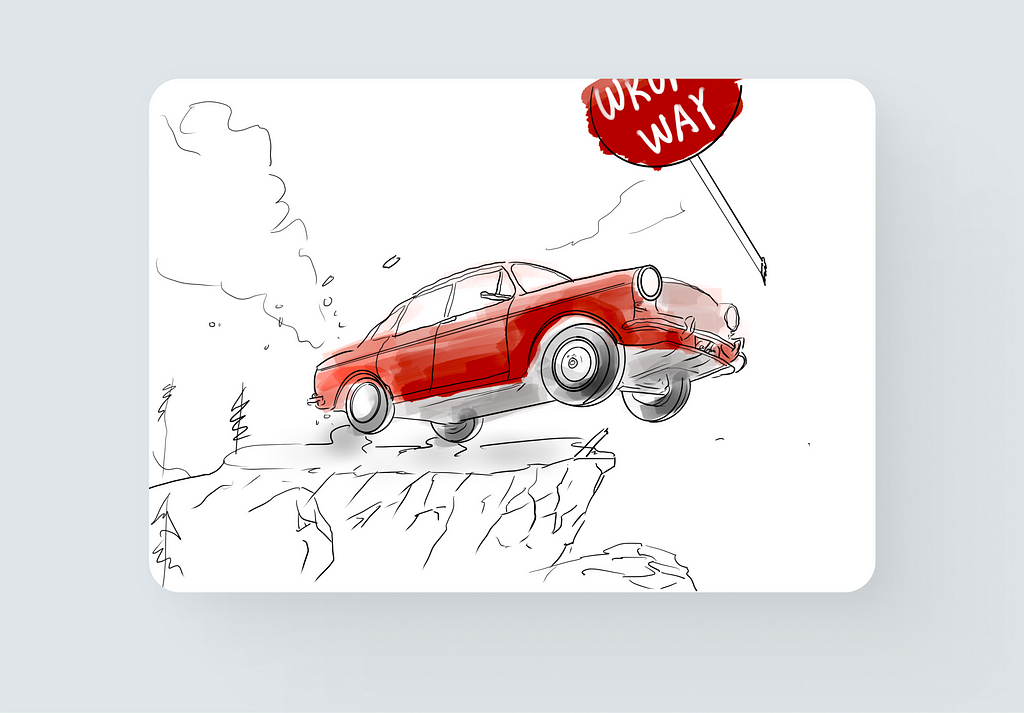
Imagine this: you’ve had another late-night work session and, unfortunately, your laptop battery gave up on you in the wee hours. After a restless night, the first thing in the morning, you rush to the repair shop, hoping to have it fixed before an important evening presentation. As usual, you rely on Google Maps for directions. As you approach an intersection, a clear voice instructs you, “turn left.” Your reflexes kick in — green light, no pedestrians, no oncoming traffic. You flick your turn signal on, rotate the wheel, everything seems smooth. But just as you’re about to enter the lane, a red “WRONG WAY” sign catches your attention. Confusion sets in, but your instinct tells you to stop and attempt a U-turn. As you’re trying to get your vehicle back on track, a white Kia comes speeding from behind and, despite the screeching brakes, a collision is inevitable.
Emerging from your car with a frown, you exchange insurance information with the other driver, pondering over the navigation instructions you had followed. Could there have been an error in Google’s route? Upon checking the map, it shows straight! It leaves you in a state of bewilderment, making you wonder if the lack of sleep might have played tricks on your perception.
Reflections from an unanticipated left turn
Admittedly, it isn’t the first time I’ve faced such a perplexing moment — like when Google Maps swiftly recalibrates the route immediately after giving out directions. Every time such an error happens, I can’t help but unleash a full-force tirade of sarcastic banter behind the wheel. Yet, regardless of my criticisms, I’ve managed to set aside these hiccups every time I step into the car, continuing my use of the service with unwavering trust.
However, this particular incident prompted some introspection. True, the left turn was my decision, and I bear responsibility for that action. But it was a decision made under the “guidance” of the navigation system. This led to a cascade of questions in my mind: Have I become excessively reliant on this tool? Or might it be that this proclaimed “user-centric” design has some unexplored room for improvement?
Problem 1: When straight ain’t that straight

Our dearly beloved Google Maps sometimes gets a little too enthusiastic, turning every drive into a wild adventure. Yet, when its suggested navigation — an occasional “turn left” instead of a “continue straight” — takes you off the familiar path, the exploration might turn into a nerve-racking episode.
At times, the road isn’t as straightforward — quite literally — as it seems. When you’re following a path that swerves slightly to the left but fundamentally maintains its direction, Google Maps may enthusiastically pronounce it a “left turn”. Imagine following the voice commands dutifully only to find yourself on an unexpected lane or even a different road altogether — quite the surprising (and potentially exasperating) turn of events. This isn’t a figment of an overworked imagination. Rather, it’s an overzealous interpretation of “continue straight” that takes us on an unintended detour.
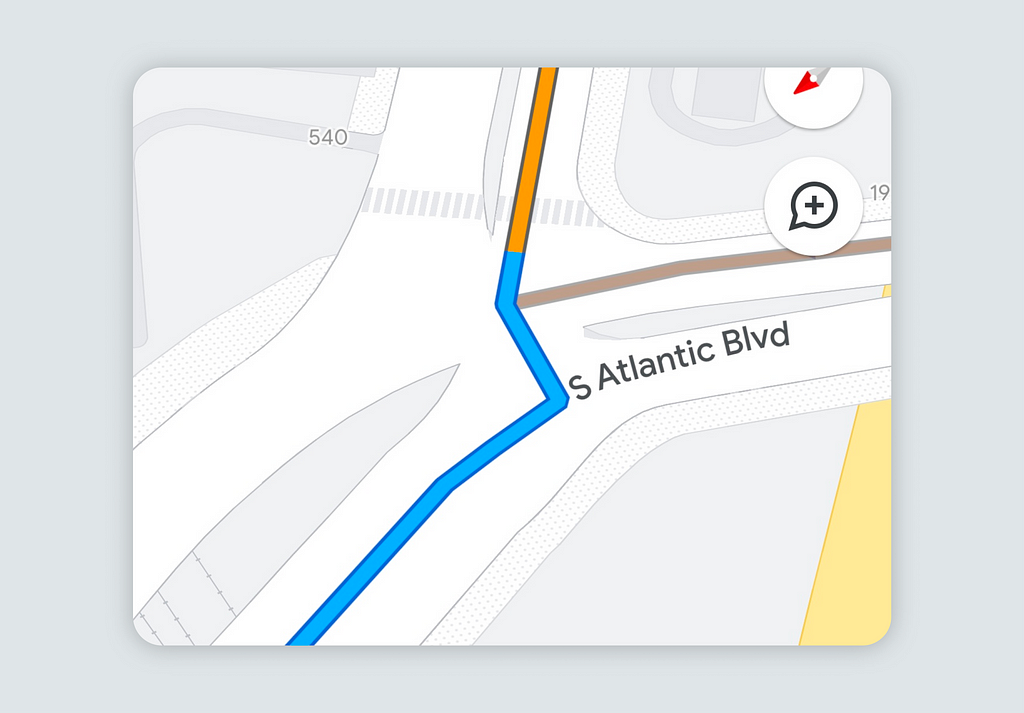
Potential Solution: Redefining ‘straight on’
The good news is that there’s a solution — revising our understanding of “continue straight” could potentially save us from these unforeseen detours. Google Maps might consider employing an algorithm that takes into account the degree of the turn and, crucially, the actual-world implications of that turn. If a path does veer significantly, but the extended course is brief and remains consistent in direction, the navigation could pronounce “continue straight” instead of “turn left”. This approach would make the navigation experience more intuitive and less puzzling.
But hold on to your hats, that’s not the only navigation conundrum that Google Maps throws our way, so let’s gear up and delve into the next one.
Problem 2: The ‘intermittent’ lane assist

Google Maps comes with a feature known as “Lane Assist”. In essence, this attribute offers guidance to users about which lane they should be in through visual signals and voice prompts.
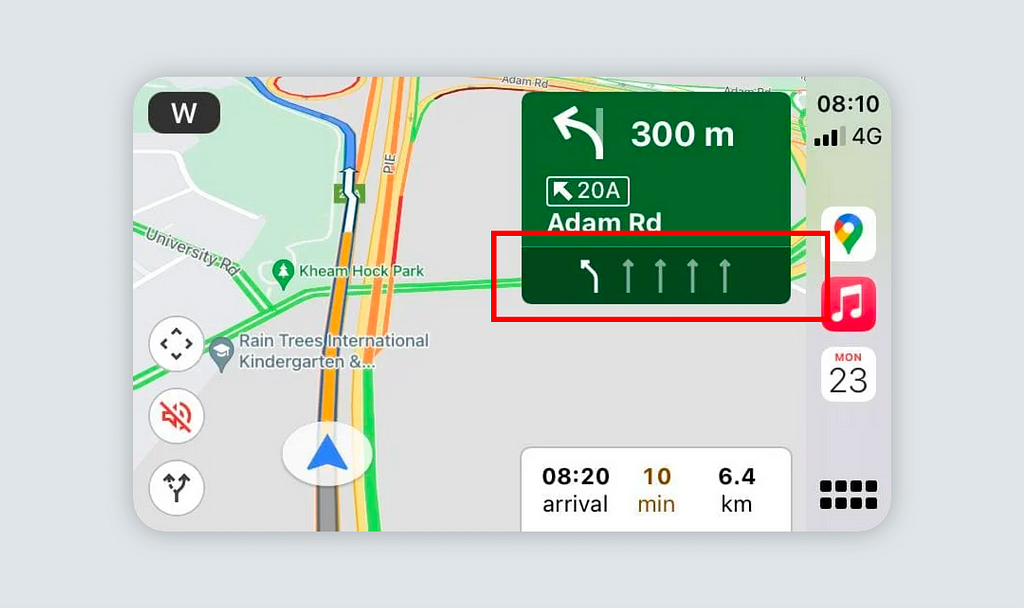
Yet, its major drawback seems to be its capricious availability. This implies that even if two Google Maps users are concurrently using the service in the same country, on the same path, one of them might unexpectedly be without this feature in their navigation. And yes, Google, it can feel a bit personal.
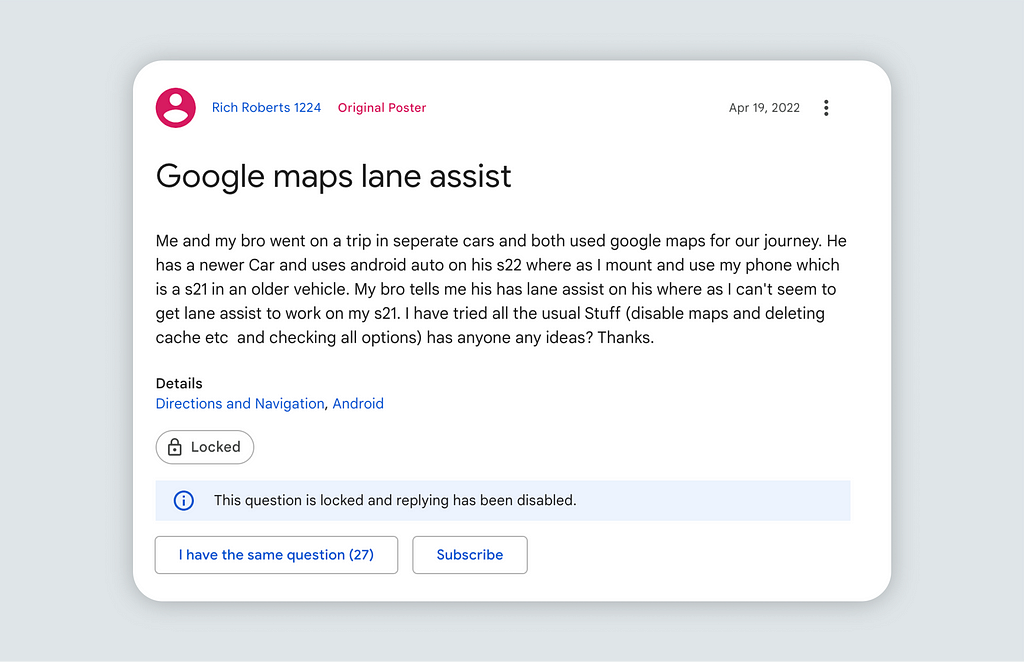
This feature can appear as elusive as a hidden room in a fantasy novel or a fabled land from ancient lore — it only emerges on the devices of those who seemingly have the right touch. Users not privy to this feature are left to navigate the labyrinth known as “complex highway junctions.” Furthering the enigma, occasional sightings of its existence surface, offering a beacon of hope for the puzzled users.
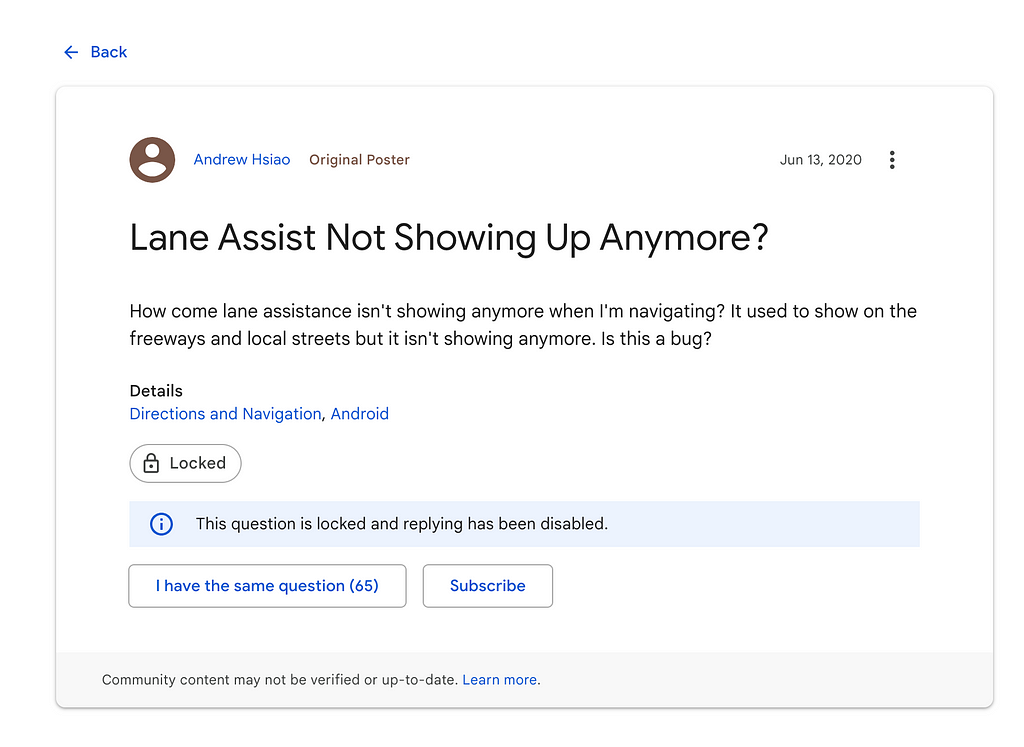
On visiting Google’s feedback community, one can find a myriad of perplexed users seeking assistance regarding this issue. Numerous bemused users are ardently sharing their experiences and ideas, aiming to unravel the puzzle of invoking this feature.
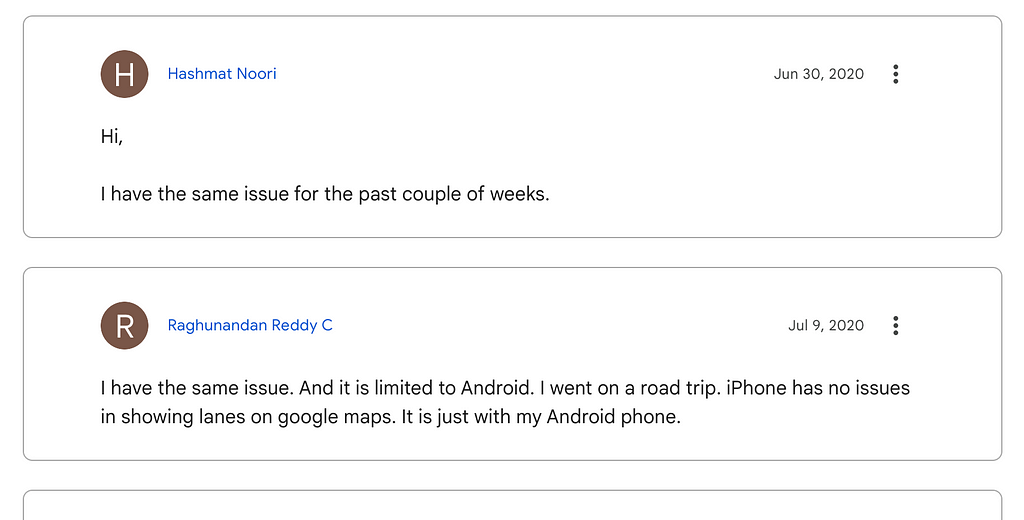
Rather than attributing this to whimsy, my professional perspective as an interaction designer impels me to believe that there must be a tangible product explanation behind this phenomenon. However, equally rooted in my professional ethos, I insist that the Google Maps team should recognize that whatever the reason, its current manifestation in the user experience can appear rather cryptic.
Now let’s explore the situation those unfortunate users (like myself) face when they lack this feature.
Interpreting the highway puzzle
Let’s start by recognizing the sterling work Google Maps has done to date. Its user interface for city navigation is nothing short of commendable. However, the brisk pace of highway traffic often leaves users with relatively less time to engage with the on-screen interface. This, in turn, highlights the significant role of voice prompts and underscores the room for their improvement.
The basic voice directions from Google Maps function much like a calming coach, offering terse commands to “turn left” or “turn right.” While this works efficiently on serene city streets, its efficiency dwindles when faced with the intricate web of multilane freeways. These instructions can become as puzzling as an enigma when users have to make quick decisions on high-speed roads.
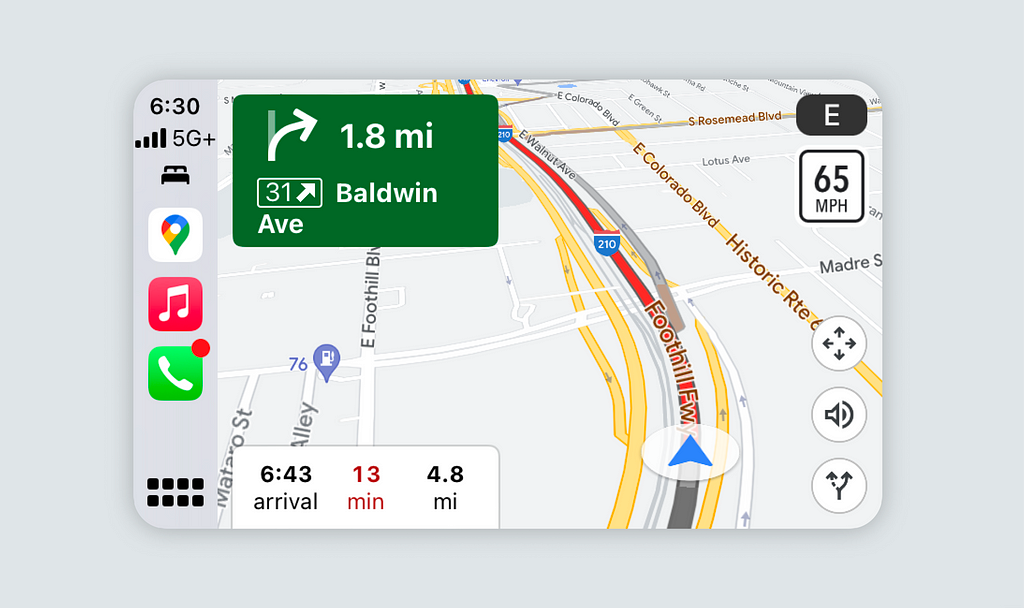
The dilemma becomes stark on the freeway, where timely lane changes are critical for safely reaching the intended exit. A basic “turn left at next intersection” leaves drivers, like me, in a quandary, unsure if I should navigate across multiple lanes to hit the correct intersection — all of which Google Maps amicably labels as “left.”
Particularly when navigating across four or five lanes, a mere instruction to exit the highway on the right when I’m currently in the leftmost lane does not offer much clarity. Should I gradually merge to the right lane or should I negotiate a hasty lane change across several lanes of traffic? My previous attempt at this manoeuvre led to an unexpected detour off the highway at an earlier exit.
Possible Solution: Charting the labyrinth of lanes
Our suggestion? We believe Google may already have an inkling of the solution, but for emphasis, let’s iterate it once more. Google Navigation could evolve into a more proficient guide, providing nuanced directions when dealing with a plethora of intersections. Directives like “exit on the far left” or “use the left two lanes” would be significantly more helpful than a generic “turn left in 1 mile.” Anticipating the correct lane in advance could alleviate the stress of lane selection on the fly and contribute to a safer travel experience.
As you can see, this feature carries immense significance for many users like me. We hope that, upon understanding its importance, the Google team can either enlighten us with a universal method to enable it or provide clear insights into the factors that may limit its availability. Such improvements could make a vast difference in the everyday commuting experience of countless drivers.
Problem 3: Bridging the gap between human and digital navigation——Memory, Landmarks, and Local McDonald’s

Despite the succinct voice instructions provided by Google Maps in the city, there’s room to further align them with users’ cognitive models during urban driving.
Let’s first delve into how humans remember and retrieve routes. When we head to a familiar place without navigation, like the McDonald’s in our neighborhood, we seldom need to glance at maps or street signs, because our brains can activate relevant memories with the help of surrounding “landmarks.” These “landmarks” could be a specific building, a traffic light, or even a peculiar intersection. They “ignite” your memory the moment you see them, letting you know that it’s time to turn right at this junction. It’s what we often term as the “sense of familiarity.” When the environment looks overwhelmingly similar, like in a massive mall’s underground parking, the recognizability of our landmarks decreases, leading to potential disorientation. This applies to driving as well; we often rely on familiar landmarks to make decisions. The following image illustrates the ideal mental model when a user turns right on a familiar path.
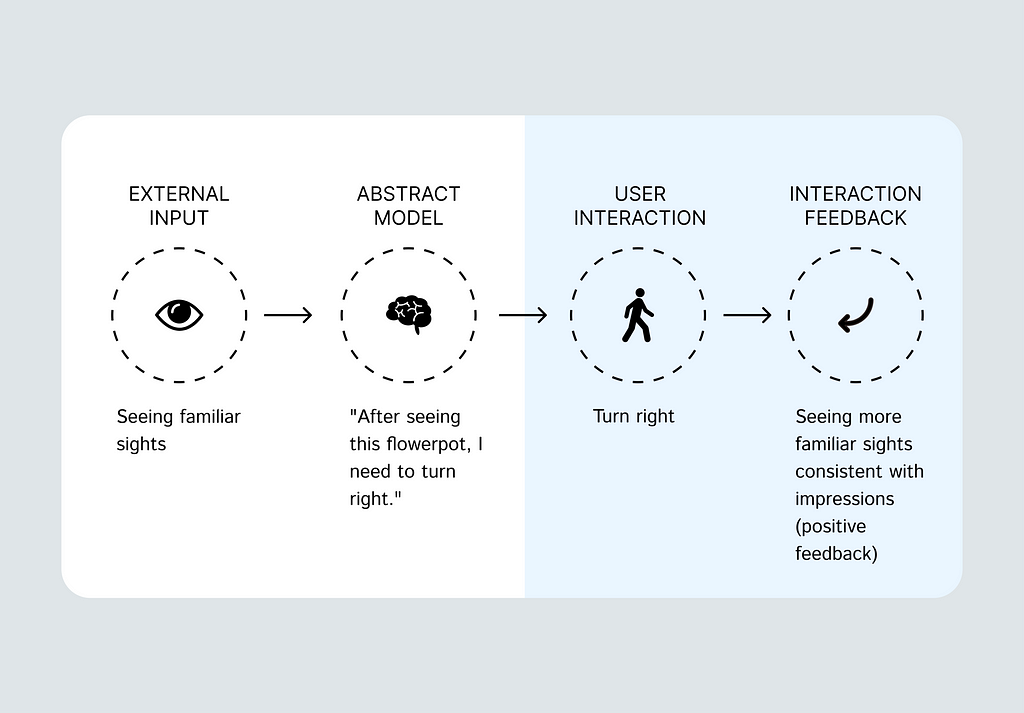
The battle against instinct

However, Google Maps’ approach to navigation doesn’t entirely coincide with this intuitive mental model.
Its instructions typically hinge on numeric distances, such as “turn right in 0.4 miles.” While this is commendably precise, particularly for long trips or areas devoid of prominent landmarks, it can sow confusion in intricate urban landscapes. For instance, in dense city traffic, 0.4 miles could encompass multiple intersections or a long stretch of road, making it challenging for drivers to instantly discern where to turn, and potentially leading to premature or belated maneuvers, thus raising the difficulty and risk.

Possible Solution: From numerical to visual cues
To more effectively cater to drivers’ mental models, we propose an optimization. The crux of this suggestion is to include specific landmarks or reference points in navigation instructions, such as “In 0.4 miles, turn right at the second traffic light.” This not only lightens the cognitive load for drivers but also markedly improves the precision and safety of navigation.
Further optimization can incorporate suitable directives when clear landmarks like traffic lights or intersections are present, aiding drivers in carrying out navigational instructions with more precision. For junctions lacking distinct landmarks, distance-only prompts can be used, helping drivers discern which intersections warrant their special attention.
In this way, the navigation system can better adapt to drivers’ mental models, aligning navigational prompts more closely with their ideal cognitive expectations. This enhancement not only boosts navigational efficiency but significantly bolsters driving safety.

Closing Thoughts: The journey of constant Improvement
We’re all explorers in this digital age, with tools like Google Maps being our trusted compass. But the exciting part of this journey isn’t just the destination, but the twists and turns, the roundabouts, and those puzzling ‘left turns.’ These are the moments that invite us to wonder, ask questions, and seek better solutions.
Yes, any product, even a well-oiled machine like Google Maps, has room for growth, refinement, and a little bit of reinvention. And guess who holds the key to those opportunities? You guessed it, it’s us, the users. Our confusions, our seemingly mundane ‘What ifs?’ and ‘Why nots?’ are goldmines of insight that can help navigate improvements to a more user-centered experience.
So, next time you’re grappling with a navigational puzzle or an ‘unexpected detour,’ don’t question your sense of direction first, dare to voice it out. No feedback is too small or too ‘silly.’ These moments of curiosity often unravel the most innovative solutions, providing priceless insights for any design team.
We have faith that the Google team, much like all of us, is on their own journey, learning from each detour, each roundabout. They’re listening, absorbing, and tirelessly iterating their way to a more seamless user experience. Remember, it’s our questions that drive this journey of constant innovation, making the ride smoother and more delightful for all.
So, let’s stay curious, adventurous, and not shy away from voicing our doubts. After all, it’s the users’ voices that keep the digital world spinning and evolving!
Source:
【1】https://www.reddit.com/r/GoogleMaps/comments/p9qrfb/poor_readability_for_lane_guidance_arrows_in/
【2】GoogleMaps Help_Community https://support.google.com/maps?sjid=14011903696040945323-NA#topic=3092425
Google Maps: about that left turn was originally published in UX Collective on Medium, where people are continuing the conversation by highlighting and responding to this story.


Leave a Reply